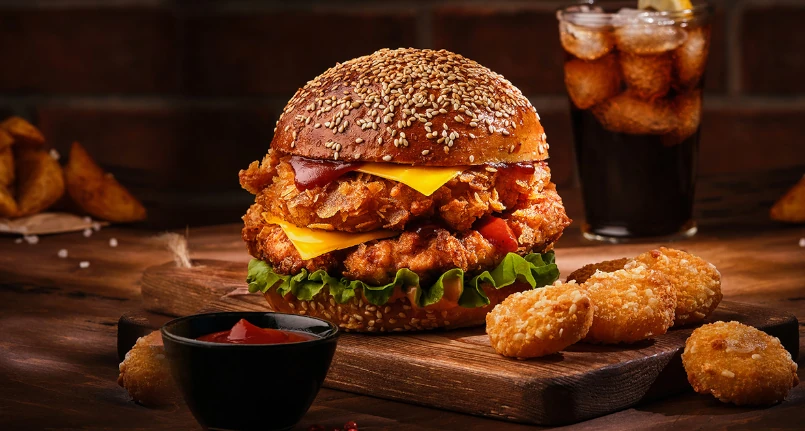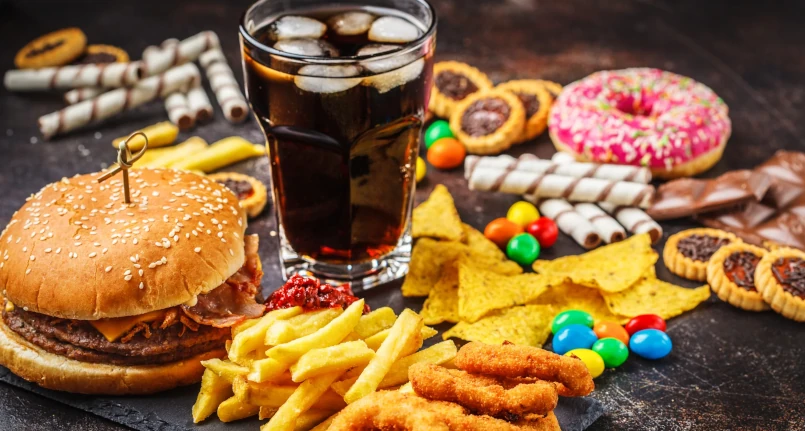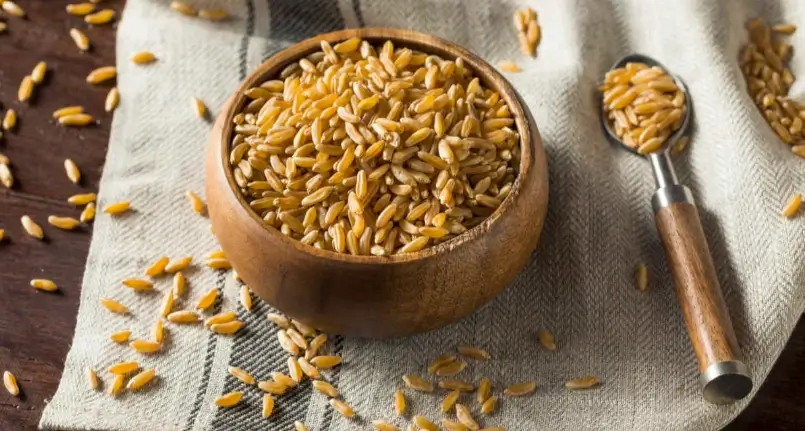What are
What are in junk food?
The existence of some foods that are not exactly healthy or even harmful is now common knowledge ; we are talking about junk foods or junk food.
Due to the importance it has on collective health – due to the almost disastrous nutritional impact and the possible statistical correlation with serious pathologies such as certain tumors – the list of these foods , which dates back almost to the time of our grandmothers, today is even taught in schools. This list includes:
- hamburger (sandwich) – any type
- Fatty cuts of meat – such as bacon, burgers , low quality meatballs , chicken wings, etc.
- hot dog (bun) – any type
- cooked and raw sausages – for example frankfurters
- fries of all kinds – especially french fries
- carbonated and/or sugary drinks – for example cola
- industrially produced snacks
- certain spirits – especially beer
- spirits – all spirits and blends containing sugar syrup
- sweet and savory snacks – for example chips and tortillas in bags, popcorn with added butter or oil, chocolate or toffee or peanut butter bars , etc.
- caloric sweeteners – such as granulated table sugar, both white and brown .
However, it must be admitted that, especially in the homeland of the Mediterranean diet , obesity is more or less continuously growing in the general population. What is perplexing is that this phenomenon seems to be expanding above all in typically Mediterranean locations ; a typical example is the Campania region – where durum wheat semolina pasta and pizza were born . Recently then, unlike what happened in the 90s and 2000s, the fast-food businessoverseas is showing a progressive decrease, to the advantage of “our” fast-foods – which, however traditional, delicious and tasty, are often far from genuine – or even of “ethnic” cuisines – unknown or almost just a decade ago.
And again, even if catering is excluded, by analyzing the community’s home diet , quite evident, albeit worrying, data emerges. It would not be only the well-known junk foods that determine the deterioration of the general state of nutrition, but also local foods.
Dangers
Why is junk food bad for you?
Junk foods have many unwanted nutritional properties. Among the various:
- often have an excessive glycemic load ; moreover, among the carbohydrates present, many are of the simple soluble type – therefore monosaccharides or disaccharides , such as table sugar, maltose and syrups – or have a high glycemic index
- contain high percentages of saturated or hydrogenated fats ; hydrogenated fats or fats subjected to incorrect heat treatment were once also very rich in trans fats
- they often hide considerable quantities of additives , including sweeteners, colourings , flavourings , etc.
- carcinogenic molecules ; the most feared are: acrylamide, acrolein , formaldehyde, all aromatic polycyclics and therefore carbonization residues .
We are “really” what we eat!
To understand the dangers of these products, it is necessary to see food in a slightly more modern way, i.e. not as a simple “fuel” for the body, but as a multifunctional, plastic substrate, rich in biological catalysts, precursors and essential factors. We must bear in mind that the “secret of youth” – but also of a good state of health – is the balance in the cellular turnover of the tissues – which must be neither too fast nor too slow. All the cells of the blood system are completely renewed within three months, those of the soft tissues within six and of the skeleton within a year. In practice, it is as if the human bodyconsisted entirely of what we ate, absorbed and metabolized over the past 12 months. Every cell of the skin , eyes , muscles , bones , nervous system and blood is totally and continuously rebuilt or renewed or repaired. As can be deduced, the building material is entirely made up of what we eat, drink and breathe.
By inference, the junk foods listed above should constitute inferior fabrics. Fortunately, the body is equipped with complex systems and biological mechanisms capable of reprocessing, synthesizing and discarding what is necessary. On the other hand, however effective and efficient, it certainly cannot be perfect and infallible. The human body can transform one sugar into another, an amino acid into a derivative, a fatty acid into its equivalent; it is also capable of transforming and expelling catabolites and toxins with the liver and kidneysbut at what price? Science has demonstrated dozens of statistical correlations between the composition of the diet and the onset of diseases or even the early degeneration of some systems – for example, an excess of “bad” fats, to the detriment of the “good” ones (especially polyunsaturated essential omega 3 ) can favor an incorrect composition of the cerebral matter and the relative decline of mental performance in old age.
Therefore it is a bit as if the body had a “pre-established maximum mileage” which, although extremely subjective, is increased or decreased based on lifestyle – motor activity also comes into play here, which however will not be taken into consideration review in this article. Without “the right materials” and “maintenance”, sooner or later, the “man-machine” will run into a breakdown of some kind: obesity, metabolic pathologies – hypercholesterolemia, type 2 diabetes mellitus, arterial hypertension , hyperuricemia , etc. – ulcers , gastroesophageal reflux disease , diverticulitis , gallstones ,, tumors etc.
Sometimes, already from the outward appearance of a person it is possible to deduce how he feeds.
Those who eat exclusively junk food often don’t have a good visual impact. The first evident characteristics of a compromised nutritional state are overweight and fat distribution. This is because, in addition to supplying the actual “fuel” for the cells – namely acetyl-coenzyme A – foods, or rather the factors that make them up, also act as modulators of the endocrine and paracrine systems . Food drastically affects the secretion of insulin and secondarily or indirectly on that of: catecholamines , prostaglandins , corticosteroids, other steroids etc. Diet can affect not only the percentage and distribution of fat, but also the possible retention of liquids – especially in those suffering from certain metabolic disorders – muscle efficiency , blood fluidity, concentration and memory. Indirectly, body composition also has numerous other statistical correlations, which vary from the incidence of idiopathic or autoimmune organic pathologies – for example psoriasis – to impairments in the emotional and/or psychological sphere – with particular reference to eating disorders, tone mood (depressive symptoms, anxiety , etc.), sexual disorders, etc.
Which ones are they
New junk foods: what are they?
After a more than exhaustive premise, let’s analyze the “other” junk foods, which would have the right to be included in the same list, but which unfortunately are known only to a small circle of professionals.
More precisely, the following list does not contain “properly” junk foods. Or rather, these foods DO NOT contain objectively harmful nutritional factors, but are widely used incorrectly in the diet. In practice, these are foods with a high energy density, coming from carbohydrates – therefore with a high glycemic load – and from fats, sometimes even animal – mainly saturated . Taken in the right portions and frequency of consumption, these foods are not only harmless, but are also quite nutritious ; unfortunately, usually, this is not the case.
The tendency to abuse it, extended to the whole peninsula, is complicit in the worsening of the general state of nutrition, with particular reference to the increase in the incidence and severity of being overweight. So let’s go into detail; the new junk foods are:
- White flour and recipes containing it, especially pizza , pasta , bread and other similar doughs ( piadina , tigelle , taralli , breadsticks , pinzone, focaccia , fried dumplings , crushes, etc.)
- Polished rice and recipes that contain it, especially sushi – which also contains salmon , a fatty fish , even if rich ingood lipids
- Whole milk derivatives and recipes containing them, from first and second courses to desserts and snacks
- Kebabs and other Southeast European and Middle Eastern recipes
- All recipes elaborated
- Products rich in sweeteners .
New ethnic junk food
Above we have referred to some preparations of ethnic cuisine. As for the kebab, being Italian, there is no reason to prefer it to our street-food; it is not a question of “parochialism”, but of common sense. The meat in the kebab sandwiches has a questionable level of hygiene, just as the method that restaurateurs use to defrost it is unsuitable. With reference to the nutritional impact, local proposals should also be considered high-calorie and high-lipid, such as piadina, the spleen sandwich , the lamprey sandwich, the porchetta sandwich , etc.
Instead, it is amazing how they can deceive the various sushi proposals. Composed above all of plain white rice and raw fish , this type of ethnic food is contributing enormously to the caloric excess of central and especially northern Italy. One leads to another and the increasingly widespread all-you-can-eat commercial system encourages diners to gorge themselves more and more. It is not clear whether the new generations are feeling the aftermath of the “era of hunger” – the post-war period, which greatly influenced food education throughout the peninsula – or whether “eating while there is enough, as long as there is sta” is either an intrinsic mechanism of our survival instinct, or just thenervous that all unites.
New Italian junk food
Bread, pasta, white rice and traditional cheeses have been essential foods in the diet of Italians since time immemorial. Foods rooted in our history and culture, as well as “economically advantageous”, which is hard to attribute to them the negative label of junk food.
In fact it would not be so , if not for our fault . In this regard it is necessary to make a clarification. Cereals and derivatives for first courses have an average portion of 80 g, which corresponds to about 280 kcal . How many of us can claim to eat only 80 g of pasta for lunch? Very few.
“My grandfather always ate three ounces of pasta and was never fat!”. Likely; but it is equally possible that 50 years ago the average caloric expenditure was even higher by 30-40%. The scarcity of automation and reduced economic availability made daily activities much more “demanding”.
Then a distinction must be made. It is true that the older generations had an average body mass index lower than that of the new generation, but it is also true that today almost everyone is overweight. ” Metabolism goes down as we age, it’s inevitable.” On the one hand it is true, but on the other hand it is used as a scapegoat. Overweight or obese elderly people , very thin in their youth, today no longer “dig the earth” but have kept the same eating habits. This is the real cause of their 20-30 kg too much, certainly not the reduction in metabolism.
Example
Bread, pasta, pizza, rice – all refined – and cheeses are today to be considered foods that the population abuses and, only for this reason , harmful. To overcome this drawback, many choose wholemeal products ; nothing to complain about. However, one must think objectively. For the contemporary lifestyle, referring to any adult, integral is better. But how much does it affect the calories of the meal? Let’s take as an example a nice pizza, whose dough weighs around 300 g, of which 55-60% is made up of flour (depending on the type of flour). On top we put tomato , about 100 g, mozzarellaat low humidity, about 150 g and a tablespoon of oil. The calories of a pizza with white flour are: about 585 kcal of flour, 25 kcal of tomato puree , 480 of mozzarella and 90 kcal of oil; total 1180 calories. Those of a wholemeal pizza instead correspond to: about 550 kcal of flour, 25 kcal of the sauce, 480 of the mozzarella and 90 kcal of the oil; total 1145 calories. Difference: 35 kcal; not worth it. Rather, it is advisable to go out and eat it one less time but choose it with traditional dough.
Sweeteners: disguised junk food?
There is an interesting theory about the role of synthetic sweeteners in maintaining excess weight. The taste of foods and beverages sweetened with synthetic sweeteners – other than sugars – raises dopamine levels , leading to addiction . In addition, the sweet taste raises insulin, which expects the entry of carbohydrate food. Insulin, when in excess, is the “fattening” hormone par excellence. High levels of insulin promote fat storage . Not actually finding any blood sugar , high insulin only serves to create hypoglycemia , increasing the sense of hunger, giving weakness, dizziness e scatenando il desiderio di cibi dolci che porta ad un vero e proprio “loop”. Pertanto non è corretto sostenere che i dolcificanti non fanno ingrassare; come sempre, dipende dal punto di vista. Per usare un termine moderno, i dolcificanti si potrebbero considerare un “fake” per il corpo umano, che li interpreta e tratta come zuccheri pur non essendolo.
In some ways we can compare sweeteners to ethyl alcohol which, with its 7.1 kcal, is considered a supplier of empty calories , as it is not metabolized as a nutrient and does not give satiety, thus providing a lot of substrate for synthesizing fatty acids and therefore storage triglycerides – as well as toxic aldehydes – without eliminating the hunger stimulus as a meal would.
New junk food and nutrition status
Bread, pasta, pizza and the typically Italian foods we have mentioned, if eaten in excess, increase the glycemic-calorie load, favoring an excessive rise in insulin, triglyceride synthesis and fat deposits.
On the other hand, whole milk derivatives , such as aged , fatty cheeses, or recipes that contain cream and mascarpone – perhaps sweetened with sugar or associated with other sweet or fatty ingredients – as well as promoting excess energy , provide cholesterol and saturated fats. The combination of these nutritional factors contributes significantly to fat deposits and the increase in ” bad cholesterol ” in the blood – LDL hypercholesterolemia .
Sweeteners, in addition to creating a slight addiction , could upset the hormonal balance of the stimulus of satiety and consequently blood sugar, increasing appetite and therefore the daily caloric intake. An excess of energy is, of course, the basis of the increase in fat deposits.
If consumption becomes significant and repeated over time, the chances of being overweight and metabolic pathologies such as type 2 diabetes mellitus and dyslipidemia – hypercholesterolemia and hypertriglyceridemia – increase, with all the ominous complications of the case.
Conclusions
Conclusions on the abuse of new junk foods
With the gradual advent of wellness, there has been an indiscriminate increase in the consumption of all foods. Paradoxically, the more precarious economic condition that has been affecting the Bel Paese for almost twenty years induces Italians to focus more on cheaper solutions instead of healthier ones. Some data suggest that this occurs above all in families of lower cultural backgrounds. Junk food of American extraction, the excess of bread, pasta and rice , supported by the advent of the most recent ethnic cuisines, has contributed – and continues to do so – to determine an increase in the population of obese, hypertensive, hypercholesterolemic , hypertriglyceridemic, insulin resistant, predisposed to cardiac ischemia, cancer and early death .
The most common – but not correct – food recommendations for losing weight and improving the metabolic state are based on the drastic reduction or elimination of carbohydrates and fats. By now, added or poor quality carbohydrates and lipids are considered the “worst enemies” of weight loss; but that’s not exactly the case. Instead, it would be correct to say that, in addition to the classic junk food, it is the excessive consumption of some sources of carbohydrates and fats that is the problem. Other sources of carbohydrates such as legumes , certain fresh fruits and vegetables are generally much better managed and, with the exceptions of the case, if regularly present in the diet, rarely lead to health and weight problems. The same goes for milk; if tolerated, this food is an excellent source of water, high biological value proteins , fat- and water-soluble vitamins , as well as calcium and phosphorus ; to tell the truth, not even cheeses would be bad quality foods, but unfortunately also in this case the common tendency is to exceed the portion and the frequency of consumption, causing them to increase weight and cholesterol in the blood . It is therefore advisable to prefer lean products , not too seasoned, and to limit the delicacies to one off.




